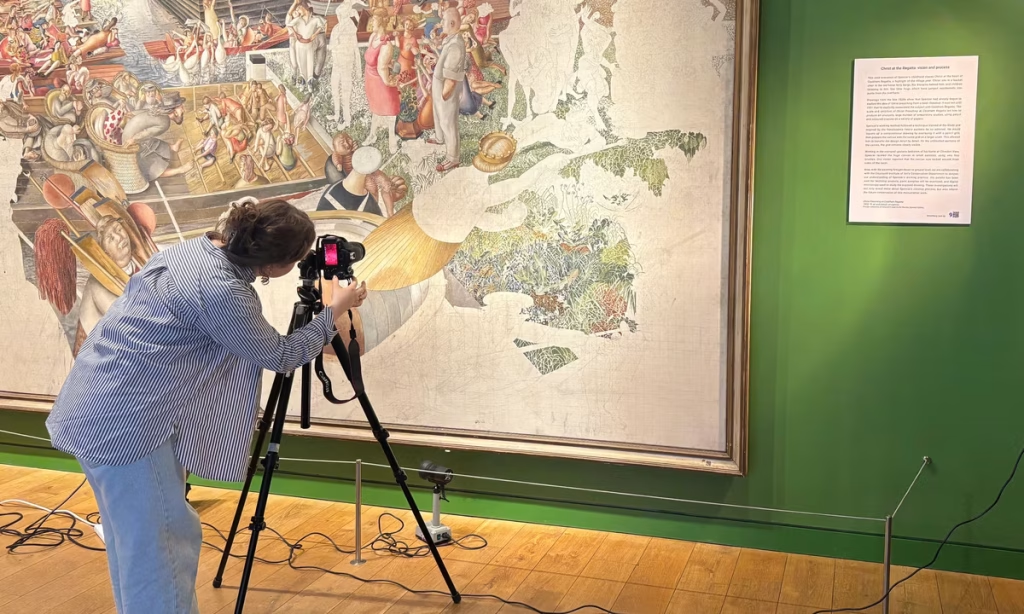Visitors can watch a conservator at work on one of the great unfinished paintings of the 20th century, as part of a new exhibition at the Stanley Spencer Gallery in Cookham, where the artist spent most of his life.
Christ Preaching at Cookham Regatta, which occupied Spencer for more than a decade but remained incomplete at the time of his death in 1959, has been hung high up in the gallery since it opened in 1962. Now, the centrepiece of Revealing Genius, Conserving Art: Stanley Spencer’s Final Masterpiece, has been brought down to ground level, allowing conservation student Olivia Leake to investigate Spencer’s methods and materials.
While Spencer’s use of a traditional pencil-drawn grid to transfer drawings to canvas is easy to see with the naked eye, other details have proved more surprising. “I was quite shocked to realise just how thin the paint is—you can see the ground coming through in most paint passages,” says Leake, who is completing a master’s degree in easel painting conservation at London’s Courtauld Institute.
Ultra-violet (UV) light reveals “little pinpoint breaks” in the paint layer, which Leake believes are consistent with Spencer’s desire to finish the painting quickly, before he died. She feels similarly about the artist’s focus on the figure of Christ at the painting’s centre, which is one of just a few areas of the approximately two by five metres canvas that might be considered complete.
Such insights have so far proved fascinating to visitors. “Opening conservation up to broader audiences is really important,” says Leake, adding that such work explains why funding the arts remains important. “A lot goes into it behind the scenes that people don’t realise,” she explains.
Paint analysis of the work has revealed that an area of water, originally green, was later overpainted with blue. Leake also points out multiple changes to the underdrawings, including to the figurehead in the foreground.
This is particularly interesting, Leake says, because there are a lot of anecdotes about Spencer never changing the underdrawing. “He’s quoted as saying to his daughter, that ‘the drawing is the image of the soul’,” she explains.
Going forward, the conservator’s priorities will be identifying and stabilising areas of concern, specifically an area of staining in the top left of the work where no paint is present, only pencil on primed canvas. It may be mould, established during the painting’s peripatetic early life, when Spencer habitually rolled it up and took it with him wherever he was going.

